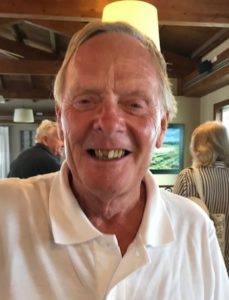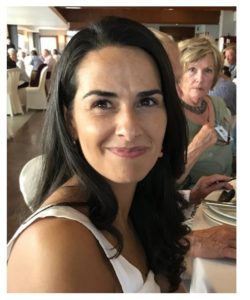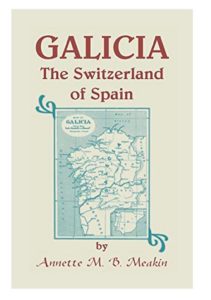 Galician Grapevine, by Peter Haden
Galician Grapevine, by Peter Haden
November 2022
After a few absences over the past Covid years, it was good to see an almost full complement of Galicia based ICC members, plus some new additions back again. All of us enjoyed the great summer weather. Peter Cudmore had proposed Vigo as our centre for the annual “Encuentro Náutico” summer gathering. Four months in advance, 20 Irish and 3 Spanish boats had registered for a week of fun, good dining, and excellent wines. Peter Fernie organised the paperwork and John Bourke contributed his wisdom and advice. Jim Sammon helped in checking out land arrangements.
Our events are now so firmly established in the Galician sailing calendar that we even have our own special Rias Baixas rally flag. Eighty members and guests attended the principal dinner which was held at the lovely Mauro restaurant at San Adrian de Cobres close to the spectacular Rande suspension bridge. John Bourke (elected to ICC 1965) entertained us with accounts of his extraordinary and varied racing life, including 14 Fastnets, 8 Round Irelands, and two Transatlantics. Added to this were stories from his wide knowledge of sailing administration and the characters involved.
Our guest speaker, Manuel Capeans, known to many ICC members, is head of Salvamento and Finisterre Traffic Control. He is also a keen sailor with Transatlantic, Mediterranean, and wide Atlantic coast experience. Another guest was Alejendro Pazo who with his family had entertained us all at his Corrubedo home during our 2021 event. He plans to join the Madeira rally in 2023.
Stanton and Pat Adair were especially welcome. They had kindly been invited as guests aboard Pat and Ann Lyons Stardancer. Encuentro Náutico events always include a walk of some sort. This year after a bus ride most of the way into the National Park, we walked to the summit of Monte Aloia. This is near the historic cathedral town of Tui on the Portuguese border, and at 700m we enjoyed spectacular views of the River Miño valley.
There were other dinners and a fun Paella Party on the club terrace at Cangas. Carmela, our Port Officer in Portosin, reports a busy season with several international rallies passing through. Several members have passed on most positive comments about the assistance received at that yacht club. Equally, Alfredo Lagos in Vigo, was a great help with our own rally, negotiating menus and prices, and sorting out members’ diffi culties.
Marinas have in general been busier than in previous years, especially with Spanish and French yachts. Pre-booking, even if only the day before has become advisable. It is notable that there has been a marked reduction of boats from the UK, and almost no boats from USA.
Book Review by Carmela Nuñez Campos, 
ICC Port Officer in Galicia
Dedicated to Annette Meakin and all those brave women who did and continue to do the unexpected
GALICIA, THE SWITZERLAND OF SPAIN
By Annette M.B. Meakin
This book is dedicated by the author to Queen Victoria Eugenia of Spain (grand-daughter of Queen Victoria) who just three years previously had married King Alfonso XIII. Theirs was not a successful marriage, nor a glorious reign, but the author could not have known that then.
Moito sabés, miña vella,
moito de sabiduría!
¡Quen poidera correr mundo
por ser como vós sabida!
Que anque traballos se pasen
aló polas lonxes vilas,
tamén ¡que cousas se saben!,
tamén ¡que cousas se miran!
Rosalia de Castro
Cantares Gallegos
This book is a complete and easily read description of Galicia before World War I consisting of an introduction focused on Galicia’s historical background, -which the author considers wonderful-, its exquisite scenery and fascinating architecture, an excellent descriptive exercise of its people and daily life, and her personal experience when travelling by horse drawn carriage, visiting some of the most important towns of the region. It is also a sympathetic portrayal made by an unexpected visitor who knew perfectly how to understand the anthropological structure and development of an isolated region in the decadent Spain of the very beginning of the 20th century.
Galicia is described as a sadly unknown territory, even for Spaniards, with its own language and culture, and undoubtedly connected to Ireland and Scotland because of its Celtic origins. The first lines of the book remark on the important role of Galicia as the cradle of the Spanish nobility, the place never conquered by the Moors.
Santiago de Compostela, with the grand cathedral leading a quite important list of remarkable buildings and architectonical elements in it, other towns in Galicia, the Camino and it’s cultural heritage, also play a significant role in this book. Language and literature are shown as two of the most important signs of the personal identity of this land, as part of it’s culture and traditions. Writers such us Rosalia de Castro and Alfonso Castelao used to base their works on different aspects of the Galician lifestyle, reflecting it accurately while adding their own personal experience and feelings. In fact, the writer dedicates an entire chapter within this book to Rosalia and we can read parts of some her poems throughout, which reinforce the accuracy of Mrs. Meakin’s descriptions.
She realized how, when political power was centralised, the Galician language suffered a decadence at the same level as the country’s agriculture and its people, leaving Galicia isolated and forgotten compared with the industrial, cultural and economic progress taking place elsewhere. Galicia was a rural area whose methods for carrying out the main activity of sustenance agriculture and livestock were archaic.
Annette Meakin arrived in La Coruña from Southampton on January 10th 1909. She came on a German boat, with plenty of emigrants whose finally destination was South America. La Coruña and Vigo were usual stops for passenger steamers on their way to Portugal and South American countries such as Argentina. Galicia was also the homeland of hard working emigrants, like those who helped to build the history of Latin American nations and to enrich their societies from the end of the 19th century and during the first 60 years of the 20th, as well as the developing economies of European countries such as Germany and Switzerland. Because of emigration, Galician society became matriarchal as most of these emigrants were men. Rosalía used to say that in Galicia there were widows of the dead and widows of the alive, those who left and never came back. The author, quoting Rosalia de Castro also points out how hard was accepting the departure of the “future” of Galicia, saying that every young man who left the shores looking for fortune was a drop of Galicia’s life-blood.
 Of her stay in La Coruña, the writer mentions the Tower of Hércules, the glass covered galleries of the buildings, the old chocolate factories built to make use of Cuban cocoa when the Caribbean country still belonged to Spain, the tobacco factory where all the workers were women, and the harbour, one of the best in Europe according to the author. There, in the Gardens of San Carlos, as might be expected, she visited the marble tomb of General Sir John Moore, who fell at the battle of Elviña in 1809 defending the town from the troops of Napoleon. But he was not the only English man connected to this town. Two centuries before, Sir Francis Drake had invaded it until the citizens lead by Maria Pita, forced him to leave.
Of her stay in La Coruña, the writer mentions the Tower of Hércules, the glass covered galleries of the buildings, the old chocolate factories built to make use of Cuban cocoa when the Caribbean country still belonged to Spain, the tobacco factory where all the workers were women, and the harbour, one of the best in Europe according to the author. There, in the Gardens of San Carlos, as might be expected, she visited the marble tomb of General Sir John Moore, who fell at the battle of Elviña in 1809 defending the town from the troops of Napoleon. But he was not the only English man connected to this town. Two centuries before, Sir Francis Drake had invaded it until the citizens lead by Maria Pita, forced him to leave.
From La Coruña the author visited towns such us Betanzos, Vigo, Orense and Tuy, which led her to include descriptions of all of them, her personal experiences and anecdotes of the daily life of the inhabitants. And among the places she describes, we find Noia and Portosín. She kindly refers to the first of them as La Bellísima Noia. She visited the town at Easter, arriving after a five hours journey, and became a privileged spectator of the Galician religious traditions of that time and the typical processions. She also made trips to O Freixo, Portosín and Ponte de D. Alonso, and described Muros as she could not finally visit it. About O Freixo, she says it is a seaside village with several boat-building establishments, ten more of those existing today, and in Portosín she visited sardine tinning factory. Now, in Portosin, no canning factory remains, although the fishing fleet of this town is still well known in Galicia and along the northern coast of Spain, and the sardines, continue to be a real delicacy.
“As de Noia ben se axuntan
as graciosas rianxeiras,
polos redondos peíños,
polas cabeleiras crechas,
polos morenos lunares
e polas agudas lenguas,
que abofé que en todo pican
omo si fosen pementa.”
Roasalía de Castro
Cantares Gallegos
When in Noia, the author visited the Churches of Santa Maria a Nova and San Martin. Beyond the accurate description of the second, she also pays attention to the medieval tombs located at Santa Maria a Nova, which visitors can still look at, and the Alameda, with it’s statue of the famous C18th sculptor Felipe de Castro.
When she leaves Noia, its people, the land and the Ria, she says she can now understand why Gallegan emigrants die of home -sickness, or morriña, as we name that feeling. She writes:
“I understood now how it came about that the Gallegan emigrants died of home-sickness, for I had experienced something of the inexpressible charm of their beautiful country, their hills and valleys always green, and their perennial streams that are never parched…..”
“Galicia with its gentle, smiling scenery, its mountains, whose slopes are veritable gardens, its innumerable springs, its rias and rivers, its vines and its orchards…..” “ Yes I had begun to understand the devotion of the Gallegans to their beautiful native land “.
Before reading this book, a treasure discovered thanks to my friend Peter Haden, sailor and connoisseur of Galicia, I used to say with pride that Galicia is the best kept secret of Spain. A land of contrasts, outstanding landscapes and a place with a historical background more than interesting. But thanks to this amazing work I know that this appreciation is no longer a matter of my love for my homeland and my knowledge of its history, but because of both equally.
If you have already visited Galicia, you will have observed some of the similitudes and the differences between past and present. If your journey is yet to start I hope you will feel a strong inner need to understand everything about this beautiful and fascinating region. Annette Meakin’s book will be your essential guide.
[/et_pb_text][/et_pb_column][/et_pb_row][/et_pb_section]